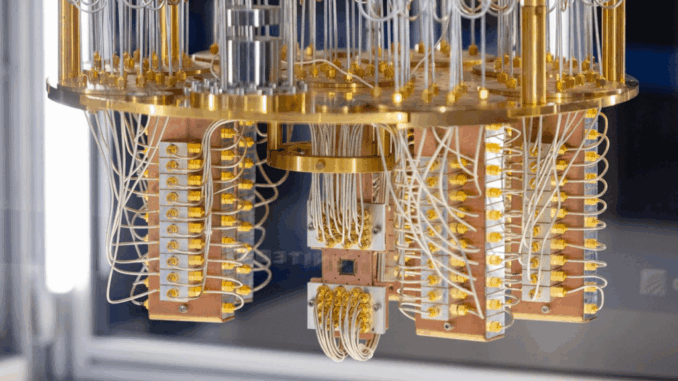

A group of physicists from Harvard constructed the first quantum computing machine that could run continuously without restarting, making a significant advancement in a field that has the potential to transform finance and medical research.
For years, most quantum computers could only run for milliseconds, and even advanced machines that could run longer would operate for just around 13 seconds. However, the Harvard team was able to run their system for more than two hours last month, and several researchers said that the machine could theoretically run forever.
Tout T stated,”There is still a way to go and scale from where we are now, but the roadmap is now clear based on the breakthrough experiments that we’ve done here at Harvard.” There is still a way to go and scale from where we are now. Wang, a research associate who works in the lab that designed the machine.
Conventional computers use binary code that can represent either zero or one, but quantum computers use subatomic particles that can represent multiple states at once. This makes it possible for quantum computers to solve problems in minutes, whereas conventional computers would ordinarily take thousands of years to run.
One of the biggest problems in quantum computing today is keeping these machines running continuously. The fundamental unit of information in quantum computing is the qubit, which is composed of subatomic particles. But when quantum computers run, qubits can escape the system through a process called “atom loss,” causing the machines to lose information and eventually fail.
Atomic loss “is a major bottleneck for this system,” said Mohamed Abobeih, a Harvard postdoctoral fellow who worked on the team. “Without solving this, there’s nowhere to go.”
University professor Mikhail Lukin — a pioneer in quantum computing who leads Harvard’s main lab for quantum research, the Harvard Quantum Initiative — launched the project five years ago to address this issue.
The team presented an experimental design for a quantum machine that can run continuously in September of this year and published their findings in the scientific journal Nature. An “optical lattice conveyor belt” and “optical tweezers,” two tools that can move atoms and subatomic particles, were used by the group in a novel way to replenish qubits as they leave the machine. The new system has 3,000 qubits and can inject 300,000 atoms per second into the team’s quantum computer, overcoming the rate of lost qubits.
“There’s now fundamentally nothing limiting how long our usual atom and quantum computers can run for,” Wang said. “Even if atoms get lost with a small probability, we can bring fresh atoms in to replace them and not affect the quantum information being stored in the system.”
Vladan Vuleti, a physicist at MIT, was a partner in the study, and he believes that these findings lay the groundwork for more significant advancements in quantum computing. He said building quantum machines that can run forever in practice — not just in theory — might now be just three short years away.
“Before it was believed that this is at least five years away,” Vuletić said. “Now it seems much closer, kind of more on the horizon of two to three years.”
The innovations from the Harvard team come as scientists across the globe race to build increasingly faster and more powerful quantum computing technology. Tens of billions of dollars have been poured into research in the hopes that advanced quantum computers could fundamentally change fields as diverse as medical research, finance, and cryptography.
“It’s just a field with a lot of potential for innovation,” said Luke M. Stewart, a team member who is pursuing a PhD in physics. “We bridge this gap between what the hardware can do and what the algorithms promise. It’s an area that’s ripe for discovery.”
Harvard has also invested heavily in quantum computing. The University announced one of the world’s first Ph.D. programs in quantum science and engineering in 2021. The next year, it announced a partnership with Amazon Web Services to study quantum networking. And the Quantum Initiative, which Lukin helps run, continues to be a center for industry-leading quantum research.
“We’re really trying to understand what the limitations are and take advantage of the existing platforms we have,” said Neng-Chun Chiu, a Physics Ph.D. student. “We would like to know how far we can push the boundaries, both in terms of the theory and the experiments,”
